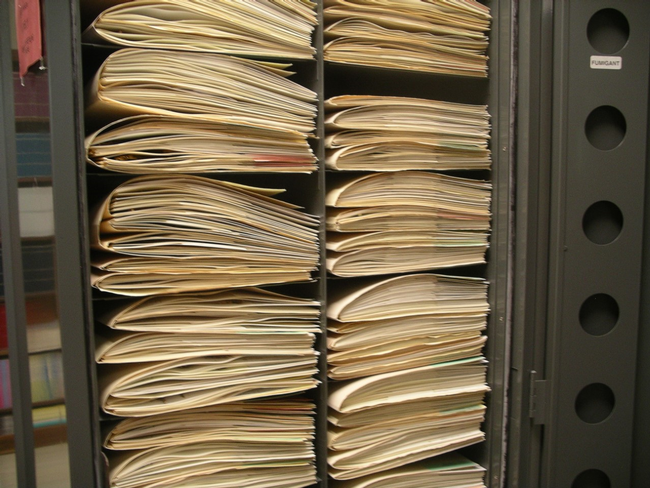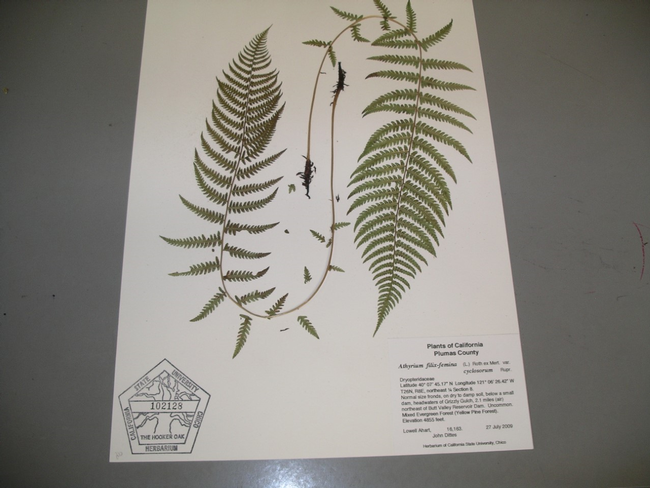By Cindy Weiner, Butte County Master Gardener, May 6, 2016.

The Chico State Herbarium's collection includes both native and naturalized plants (naturalized plants grow in the wild but are non-native). Each specimen has a label which lists the scientific name of the plant, its collector's name, the date it was collected, and information about where it was found, including elevation, geographic location and description of the habitat where the plant was growing. This information is added to an online database maintained by the Consortium of California Herbaria, a group of 32 herbaria in California plus three out-of-state institutions with sizeable collections of plants from California. After a specimen has been added to the database, it is filed in a cabinet according to its plant family, genus and species.

All it takes is access to the internet to be able to retrieve information about any of the more than 2 million specimens represented in the database without having to visit the herbarium where a particular specimen is kept. But sometimes an in-person visit to the herbarium is necessary. The Chico State Herbarium has hosted researchers from a variety of institutions, including the Smithsonian Institution, the University of Washington and even a Japanese university.
Sometimes specimens are lent to other institutions. The Chico State Herbarium recently lent 148 specimens of slime mold to a researcher at the Polish Academy of Sciences.
Traditionally herbaria were a resource for identification and documentation of plants, but their nature has changed in the last 50 years. The information on collection labels and the DNA contained within the plant are rich sources of scientific data about geographic range, evolution of new species, patterns of diversity, introduction and spread of invasive species, and global climate change. Past and current conditions can be compared with an eye to planning for future conditions. Therefore, in addition to botanists and other researchers, conservation and land managers find the Herbarium a valuable resource.
Biological sciences professor Colleen Hatfield is director of the Chico State Herbarium; Lawrence Janeway is part-time curator of the collection. Volunteers and student interns do the mounting, databasing and filing. A group of supporters called Friends of the Herbarium (FOH) raises money to pay for equipment and the curator's salary. FOH has a regular program of events and workshops that are open to the public. Some of the workshops are designed for botanists, but others are of general interest, such as recent workshops on botanical illustration and wreath making.
Located in Holt Hall room 129, the Chico State Herbarium is open to the public every Friday from 8-5. There are dissecting microscopes and an extensive reference library available for use. Volunteers can help identify plants, from the latest weed invading one's garden to the wildflowers in a favorite photo.
For further information, see the following websites:
Chico State Herbarium
Friends of the Herbarium
Consortium of California Herbaria


